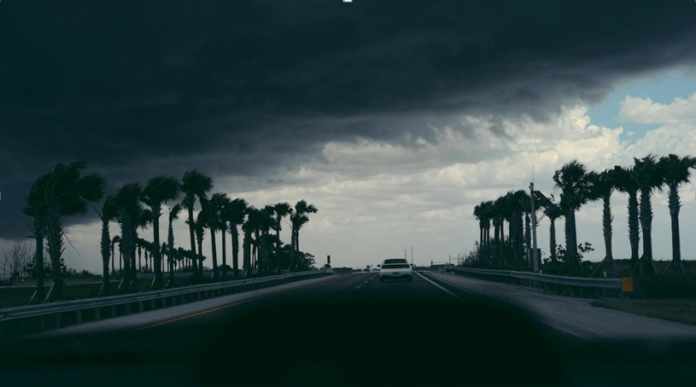When it comes to tropical storms in South Florida, their torrential rains and powerful winds create the perfect recipe for water damage and mold growth. The region’s warm, humid climate amplifies these risks, turning even minor storms into potential threats to homes and health. Understanding how tropical storms contribute to water damage and mold, along with the steps to mitigate these issues, is essential for South Florida residents. Follow this guide as we uncover the connections between tropical storms, heavy rains and water damage, the resulting health and structural risks, and effective strategies to protect your home from mold and these persistent challenges.
The Impact of Tropical Storms on Water Damage
Tropical storms unleash heavy rainfall, storm surges, and high winds that can overwhelm South Florida homes. Roofs, often battered by debris or weakened by age, develop leaks that allow water to seep into attics and walls. Windows and doors, especially if poorly sealed, become entry points for wind-driven rain, soaking interiors. Storm surges and flooding push water into basements, crawl spaces, and lower levels, saturating carpets, drywall, and furniture. Clogged gutters or inadequate drainage systems exacerbate the problem, causing water to pool around foundations or infiltrate through cracks. South Florida’s high humidity slows the drying process, leaving homes damp for days or weeks after a storm. This persistent moisture creates ideal conditions for mold, making swift action critical to prevent long-term damage.
How Water Damage Leads to Mold Infestations
Mold often thrives best in the warm, humid, and waterlogged conditions that follow tropical storms in South Florida. When water infiltrates a home, it soaks porous materials like drywall, insulation, and wood, providing a fertile environment for mold spores to colonize. Within just 24 to 48 hours, mold can begin to grow, and spread rapidly – especially in South Florida’s tropical climate. Hidden areas, such as behind walls, under flooring, or in HVAC systems, are particularly vulnerable, as moisture often goes unnoticed until mold becomes widespread. Poor ventilation, common in tightly sealed homes or those without power after a storm, traps humidity, further fueling mold growth. Once established, mold releases airborne spores, which can spread contamination throughout the home, compounding health and structural risks. Addressing water damage immediately is essential to stop mold before it takes hold.
Health and Structural Risks Due to Mold
The mold that follows tropical storm water damage poses significant threats to both health and property. Inhaling mold spores can trigger respiratory issues, such as coughing, wheezing, or shortness of breath, particularly for individuals with asthma or allergies. Prolonged exposure may lead to chronic sinus infections, skin rashes, or fatigue, with children, the elderly, and those with weakened immune systems facing heightened risks. Certain molds, like Stachybotrys chartarum (black mold), produce toxins that can cause more severe symptoms, including headaches or neurological issues. Structurally, mold degrades materials like wood, drywall, and insulation, weakening a home’s framework and leading to costly repairs. In South Florida’s humid environment, mold can spread quickly, infiltrating hidden areas and requiring extensive remediation if not addressed promptly. Protecting your home from mold is crucial for maintaining a safe living space.
See also: Www.rajkotupdates.news : drinking lemon is as beneficial
The Challenges of DIY Mold and Water Damage Cleanup
Many South Florida homeowners attempt to handle water damage and mold cleanup themselves after a tropical storm, but DIY methods often fall short. Household cleaners like bleach may remove visible mold from non-porous surfaces but fail to address spores embedded in porous materials or circulating in the air. Disturbing mold during cleaning can release spores, spreading contamination and increasing health risks. Without specialized tools, such as moisture meters or industrial dehumidifiers, it’s difficult to fully dry water-damaged areas or detect hidden mold. DIY efforts also rarely address the root cause of water intrusion, such as roof leaks or poor drainage, allowing mold to return. For significant water damage or mold growth, professional intervention is often necessary to ensure thorough and safe resolution.
Professional Solutions for Water Damage and Mold Remediation
Professional services for water damage and mold restoration offer the most effective way to restore South Florida homes after tropical storms. Certified experts begin by assessing the extent of water damage and mold growth, using advanced tools like infrared cameras to detect hidden moisture and mold. They employ industrial-grade equipment, such as high-capacity water extractors, dehumidifiers, and HEPA air scrubbers, to dry affected areas and remove airborne spores. Containment barriers and negative air pressure prevent mold from spreading during cleanup. Professionals also address the source of water intrusion, whether it’s repairing a damaged roof, sealing windows, or improving drainage, to prevent future issues. By following strict safety protocols, they ensure your home is safe for occupancy. Professional remediation provides a comprehensive solution, protecting your health and property from the long-term effects of mold.
Preventing Water Damage & Mold During Tropical Storms
Preventing water damage and mold starts with preparing your South Florida home before tropical storms hit. Inspect your roof for worn shingles, cracked flashing, or clogged gutters, and make repairs to prevent leaks. Seal windows, doors, and foundation cracks with weatherproof caulk to block water entry. Ensure your drainage systems, such as downspouts and yard grading, direct water away from your home. Consider installing a sump pump in basements or low-lying areas to manage potential flooding. During a storm, use sandbags or barriers to protect entry points if flooding is expected. After the storm, dry wet areas immediately using fans, dehumidifiers, or professional water extraction services. Remove saturated materials like carpets or drywall that cannot be dried within 48 hours. Maintaining low indoor humidity with dehumidifiers and ensuring proper ventilation with exhaust fans or open windows helps create an environment where mold cannot thrive.
Mold Prevention Strategies for South Florida Homes
South Florida’s climate requires ongoing vigilance to keep homes mold-free beyond hurricane season. Regularly maintain your roof, gutters, and drainage systems to ensure they function properly year-round. Use mold-resistant paint or drywall in moisture-prone areas like bathrooms or laundry rooms. Monitor indoor humidity with a hygrometer, keeping levels below 50% with dehumidifiers or air conditioning. Clean and inspect HVAC systems to prevent mold growth in ducts, which can spread spores throughout your home. Schedule annual professional inspections to catch hidden moisture or mold issues early, especially after a stormy season. By staying proactive, you can minimize the risk of mold and protect your home from the effects of tropical storms.
Protecting Your South Florida Home The Elements
Tropical storms in South Florida bring water damage and mold risks that demand immediate attention and long-term prevention. By understanding how these storms can lead to moisture issues, recognizing the health and structural dangers of mold, and taking proactive steps, you can safeguard your home. Although DIY mold cleanup techniques might help with minor issues, opting for professional mold removal is by far the best solution for significant water damage or mold growth. With proper preparation, swift action after major storms, and ongoing maintenance, you can keep your South Florida home safe, dry, and free from mold – even during the most intense tropical storms, whether during hurricane season or throughout the year.


